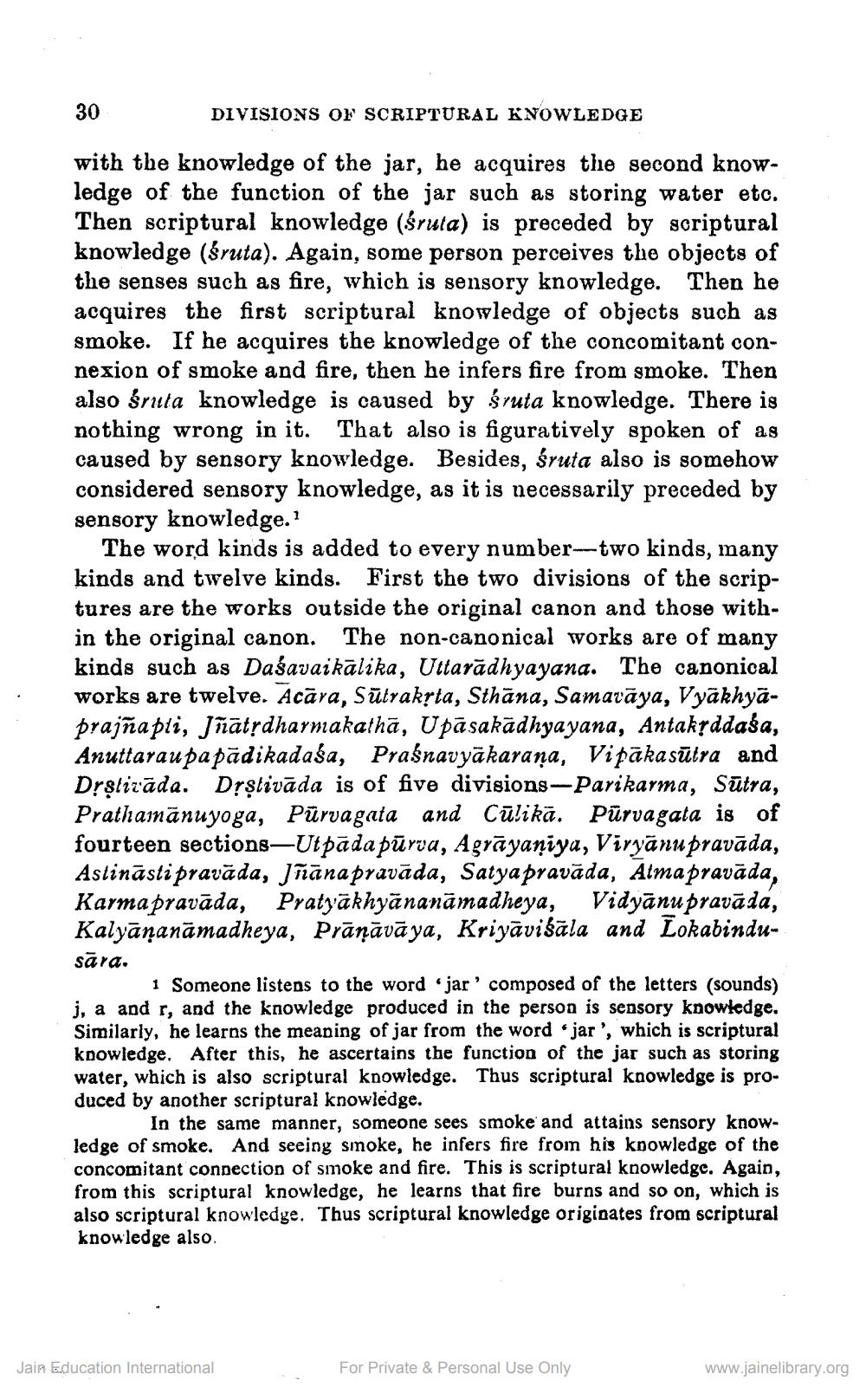________________
30
DIVISIONS OF SCRIPTURAL KNOWLEDGE
with the knowledge of the jar, he acquires the second knowledge of the function of the jar such as storing water etc. Then scriptural knowledge (śruta) is preceded by scriptural knowledge (śruta). Again, some person perceives the objects of the senses such as fire, which is sensory knowledge. Then he acquires the first scriptural knowledge of objects such as smoke. If he acquires the knowledge of the concomitant connexion of smoke and fire, then he infers fire from smoke. Then also śruta knowledge is caused by śruta knowledge. There is nothing wrong in it. That also is figuratively spoken of as caused by sensory knowledge. Besides, śruta also is somehow considered sensory knowledge, as it is necessarily preceded by sensory knowledge.
The word kinds is added to every number--two kinds, many kinds and twelve kinds. First the two divisions of the scriptures are the works outside the original canon and those within the original canon. The non-canonical works are of many kinds such as Daśavaikālika, Uttarādhyayana. The canonical works are twelve. Acāra, Sūtrakrta, Sthāna, Samarāya, Vyākhyā. prajñapli, jñātņdharmakathā, Upāsakādhyayana, Antakyddasa, Anuttaraupapādikadaśa, Praśnavyākarana, Vipākasūtra and Drşlitāda. Drștivāda is of five divisions-Parikarma, Sūtra, Prathamānuyoga, Pūrvagata and Culikā. Pārvagata is of fourteen sections—Ulpāda pūrva, Agrāyaniya, Viryānupravāda, Astināsti pravāda, Jñānapravāda, Satya pravāda, Alma pravāda, Karmapravāda, Pratyākhyānanāmadheya, Vidyānu pravāda, Kalyānanāmadheya, Prāņāvāya, Kriyāviśāla and Lokabindusāra.
1 Someone listens to the word jar' composed of the letters (sounds) j, a and r, and the knowledge produced in the person is sensory knowledge. Similarly, he learns the meaning of jar from the word jar', which is scriptural knowledge. After this, he ascertains the function of the jar such as storing water, which is also scriptural knowledge. Thus scriptural knowledge is produced by another scriptural knowledge.
In the same manner, someone sees smoke and attains sensory knowledge of smoke. And seeing smoke, he infers fire from his knowledge of the concomitant connection of smoke and fire. This is scriptural knowledge. Again, from this scriptural knowledge, he learns that fire burns and so on, which is also scriptural knowledge. Thus scriptural knowledge originates from scriptural knowledge also.
Jain Education International
For Private & Personal Use Only
www.jainelibrary.org




